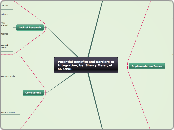Potential Benefits and Barriers to Integration, by: Sherry Meier, et. al. 1998.
Literature Supporting Integration
Curriculum and Evaluation Standards for School Mathematics identifies that every level of K-12 Standards contains the 4 common process standards.
Problem Solving
Communications
Reasoning
Connections
Association for the Advancement of Science, 1989
"need for students to be scienctifically and mathematically literate"
The National Science Education Standards, 1995
"Scientific literacy includes the interdependency of science with other subjects such as mathematics and technology."
McBride and Silverman, 1991
Cite close interrelatedness between math and science
Deeper understanding could be achieved through math by quantifying and explaining scientific relationships.
Southwell, 1994
Showing relevance of math allos students to see numerous applications outside classroom.
Implementation Issues
Several problems identified include trivializing content, resulting in deficient skills, teacher knowledge, school structure, and assessment
Content Barrier
theme chosen by teacher is usually not math.
Math involved is not challenging but narrow
Only what fits into integrated unit is studied
Would leave wide gaps in math concepts.
Teacher Knowledge Barrier
Teachers unprepared in content knowldedge
Unknown which group is best prepared
State certification systems cause difficulty to be certified under different subject areas.
Teachers have math anxiety
Most programs designed to be taught by team teaching
Lack of commited administration/ teacher
Teacher Belief Barrier
Teachers unwilling to change
Time contraints / weak backgrounds
Unaware or unfamiliar with integration methods
Prior beliefs and concerns about integration
School Structure Barrier
Lack of planning time
Student schedule issues
Labs poorly equipped to handle "lab oriented science"
issues with "tracked" students
Acquisition of materials
Purchasing systems inflexible
Teachers not accustomed to obtaining materials
Adoption cycle issues for curriculum programs
Assessment and Curriculum Barriers
Tests made to measure one content not multiple
Assessments should match curricula methods and goals
Programs need to be developed that assess both content areas simultaneously
Key to acceptance of any curriculum comes from accepting all materials supporting this reform.
Curriculum materials being produced already by National Science Foundation, Systemic Initiatives in Montana Mathematics and Science, IMaST, Maths in Context, and Sixth Through Eight Mathematics
Staff development for teachers required in order to be successful
Discussion Questions:
Do I want students’ pedagogical content knowledge to be interdisciplinary?
Does the teacher education program need to develop inservice programs for the many teachers already teaching who have never experienced (much less taught) integrated curricula?
Do we place our student teachers with cooperating teachers who teach an integrated curriculum, and, if so, how do we find enough of these teachers and schools?
Do teacher education faculty members work in cross-disciplinary teams as a model for their students?
Are we modeling an integrated curriculum for these students by coordinating their teaching efforts across departments?
Does our teacher education program prepare prospective teachers to teach in an integrated setting?
Do I want preservice teachers to understand how to teach mathematics, science, and language arts as separate subjects in their own right
Lack of Research
Little change is carried out, since there is little research on the benefits of integration.
Shann's research showed increase appreaciation for science when integrated with math/science program.
Teaching Integrated Mathematics and Science (TIMS) finds that "a consistent dose of hands-on activities can make a real difference in student performance"
Berlin and Hillen (1994) report positive cognitive outcomes
related to participation in the Activities Integrating Mathematics and Science (AIMS) program
CeMaST developed an Integrated Mathematics, Science, and Technology. Students score higher on open-ended,student-constructed response
Ask that schools asses what major outcomes are desired, not just what is easy to measure.
Conclusions
Educators need to collaborate to achieve common goals (Education Reform)
Share best practices
Address preservice knowledge barriers
Give the long term support when addressing change
Develop teachers' better understanding for integration programs
Develop awarenes of community for education reform to achieve educational change
Tools to success!
Quality materials & methods
Adequate/Ongoing Staff development to implemet curricula
Develop assessmens that measure student competency for mastery.
Strongly believe that YES integration can be done!
